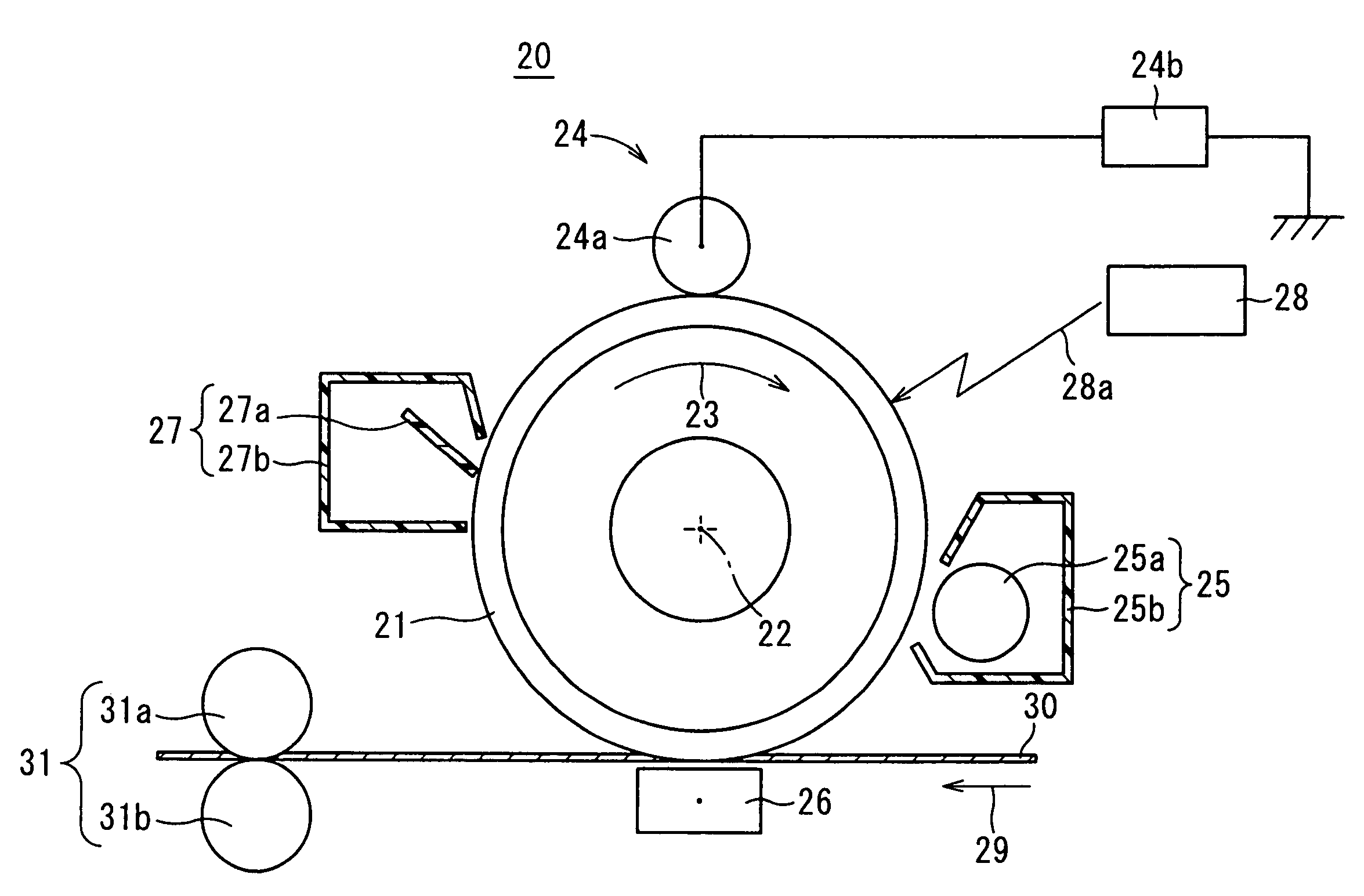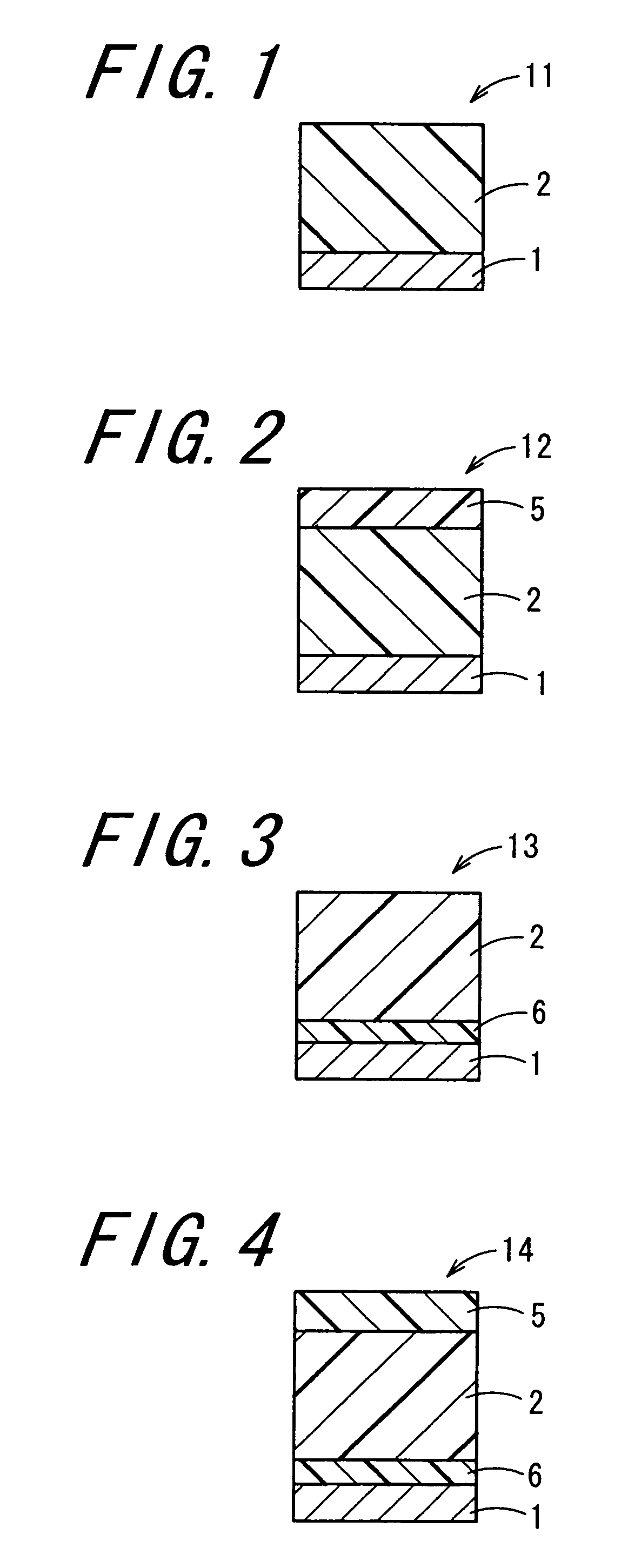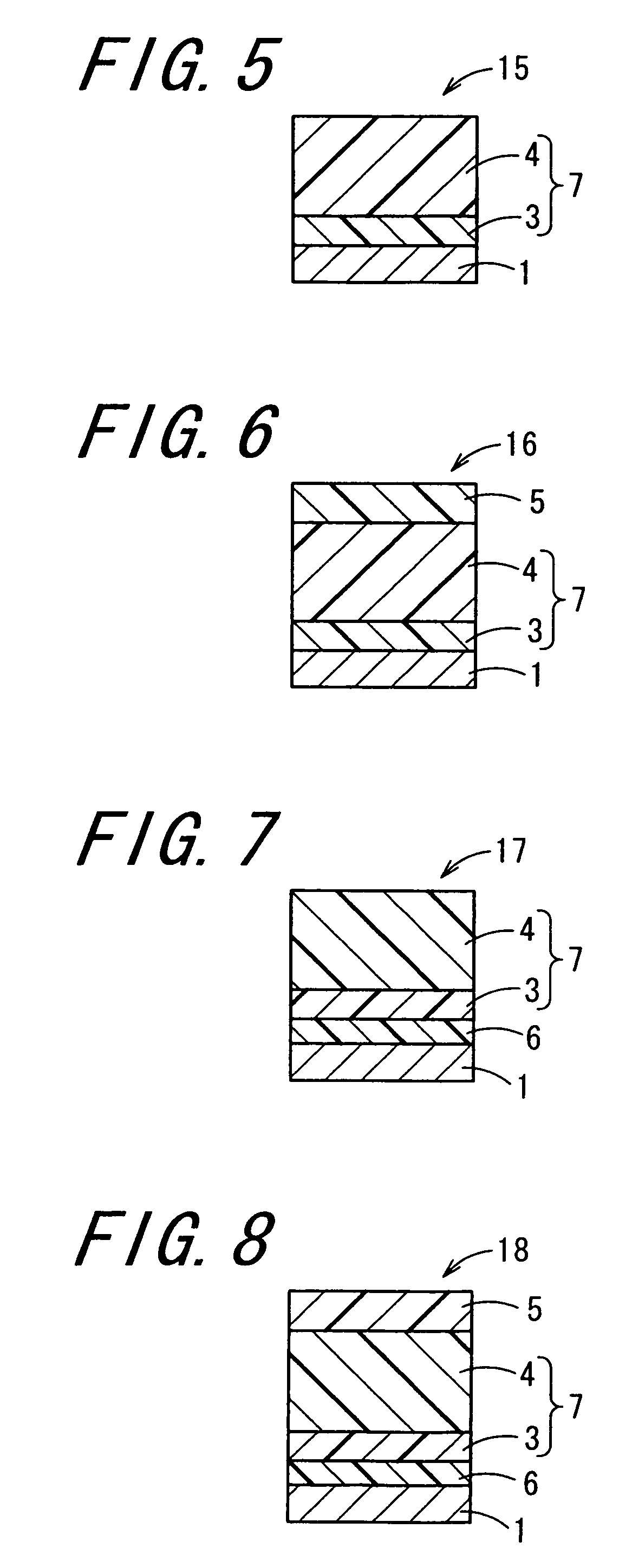Asymmetric bis-hydroxyenamine compound, electrophotographic photoreceptor and image forming apparatus
a technology of asymmetric bishydroxyenamine and compound, applied in the direction of electrographic process, corona discharge, instruments, etc., can solve the problems of difficult film formation of photosensitive layer, poor plasticity, high production cost, etc., and achieve excellent electric properties and durability, excellent solubility, excellent charge transport ability
- Summary
- Abstract
- Description
- Claims
- Application Information
AI Technical Summary
Benefits of technology
Problems solved by technology
Method used
Image
Examples
production example 1
[0202]In accordance with the following reaction process schemes, an Exemplified Compound No. 1 (compound (1aa)) was produced:
[0203]
[0204](Production of Enamine Intermediate (8a))
[0205]20.6 g (1.05 equivalent weights) of diphenyl acetaldehyde (6a), 21.9 g (1.0 equivalent weight) of N-phenyl-α-naphthylamine (7a), and 0.23 g (0.01 equivalent weights) of DL-10-camphor sulfonic acid were added to 100 ml of toluene and then, the resultant mixture was allowed to react for 6 hours by heating at from 120 to 130° C. while removing by-product water by azeotropic distillation with toluene. After such reaction was terminated, a reaction solution was condensed to about one tenth and then, gradually added in drops into 100 ml of hexane under vigorous stirring, to thereby allow a crystal to be precipitated. The thus-precipitated crystal was filtered out, and rinsed with cold ethanol, to thereby obtain 34.9 g of a pale-yellow powdery compound.
[0206]As a result of analyzing the thus-obtained pale-yel...
production example 2
Synthesis of Symmetric Bis-Hydroxyenamine Compound for Comparison
[0221]In the same manner as in Production Example 1 except for using 16.9 g (1.0 equivalent weight) of diphenyl amine as a secondary amine compound in place of 21.9 g (1.0 equivalent weight) of N-phenyl-α-naphthylamine (7a), obtained was 4.21 g of a symmetric bis-hydroxyenamine compound (hereinafter, referred to also as “symmetric bis-hydroxyenamine compound (13)”) represented by the following chemical structural formula (13) which is the exemplified compound (EA-14) as described in Example 1 in JP-A No. 2004-269377:
[0222]
[0223]Elementary analytical values of the thus-obtained symmetric bis-hydroxyenamine compound (13) by a carbon (C), hydrogen (H) and nitrogen (N) simultaneous quantitative procedure on the basis of a differential specific thermal conductivity method were as follows:
[0224]
Theoretical Values
[0225]C: 86.42% H: 5.70% N: 2.40%
Actually Measured Values
[0226]C: 85.97% H: 5.38% N: 2.27%
[0227]Further, as a resu...
example 1
[0229]In a manner as described below, an electrophotographic photoreceptor in which the Exemplified Compound No. 1 which is the asymmetric bis-hydroxyenamine compound according to the invention produced in Production Example 1 was used as a charge transporting substance of a charge transporting layer was produced. As for a conductive substrate, an article (hereinafter, referred to also as “aluminum vapor-deposited PET film”) in which aluminum is vapor-deposited on a surface of a polyethylene terephthalate (abbreviated as PET) film having a thickness of 100 μm was used.
[0230]Seven parts by weight of titanium oxide (trade name: Tipaque TTO55A; manufactured by Ishihara Sangyo Kaisha, Ltd.) and 13 parts by weight of a copolymerized nylon resin (trade name: Amilan CM8000; manufactured by Toray Industries, Inc.) were added to a mixed solvent of 159 parts by weight of methyl alcohol and 106 parts by weight of 1,3-dioxolan and then, subjected to a suspension treatment by a paint shaker for ...
PUM
| Property | Measurement | Unit |
|---|---|---|
| temperature | aaaaa | aaaaa |
| volume resistance | aaaaa | aaaaa |
| Thickness | aaaaa | aaaaa |
Abstract
Description
Claims
Application Information
 Login to View More
Login to View More - R&D
- Intellectual Property
- Life Sciences
- Materials
- Tech Scout
- Unparalleled Data Quality
- Higher Quality Content
- 60% Fewer Hallucinations
Browse by: Latest US Patents, China's latest patents, Technical Efficacy Thesaurus, Application Domain, Technology Topic, Popular Technical Reports.
© 2025 PatSnap. All rights reserved.Legal|Privacy policy|Modern Slavery Act Transparency Statement|Sitemap|About US| Contact US: help@patsnap.com



